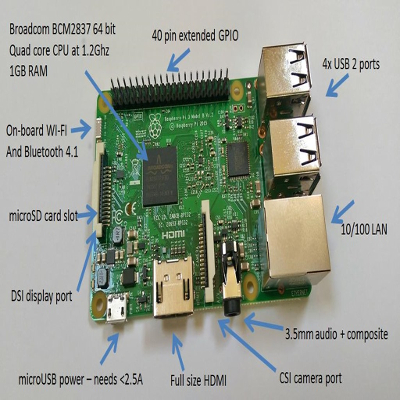


Then connect a 10KΩ Potentiometer to pin 3 of the LCD, which is the contrast adjust pin. First, connect pins 1 and 16 of the LCD to GND and pins 2 and 15 to 5V supply. The design of the circuit for Interfacing 16×2 LCD with Raspberry Pi is very simple. Miscellaneous (Computer, Ethernet Cable, etc.).Raspberry Pi 3 Model B (any Raspberry Pi).Slight modifications are needed in the Python Program if the circuit is configured in 8 – bit mode. The Python code explained here is also related to this configuration. NOTE: In this project, we have used the 4 – bit mode of the 16×2 LCD display. The following image shows the wiring diagram of the featured circuit of this project i.e.

The circuit diagram (with Fritzing parts) is shown below. Hence, we have opted for 4 – bit mode of LCD. This type of connection requires more pins on the Raspberry Pi. In 8 – bit mode, all the 8 data pins i.e. I’ll show the circuit diagram for both the modes. Using these data pins, we can configure the 16×2 LCD in either 8 – bit mode or 4 – bit mode. The pin description in the above table shows that a 16×2 LCD has 8 data pins. Sends data to data pins when a high lo low pulse is givenĬircuit Diagram of 16×2 LCD Interfacing with Raspberry Pi Pin NumberĬommand register when 0 and data register when 1 The pin description of the 16×2 LCD Display Module is shown in the following table. Typically, a 16×2 LCD Module consists of 16 Pins. Almost all the 16×2 LCD Display Modules that are available in the market are based on the Hitachi’s HD44780 LCD Controller. It supports 16 characters per row and has two such rows. Applications of Interfacing 16×2 LCD with Raspberry PiĪ 16×2 LCD is one of the most popular display modules among hobbyists, students and even electronics professionals.Working of the Project and Code Explanation.Python Program for Interfacing 16×2 LCD with Raspberry Pi.



 0 kommentar(er)
0 kommentar(er)
